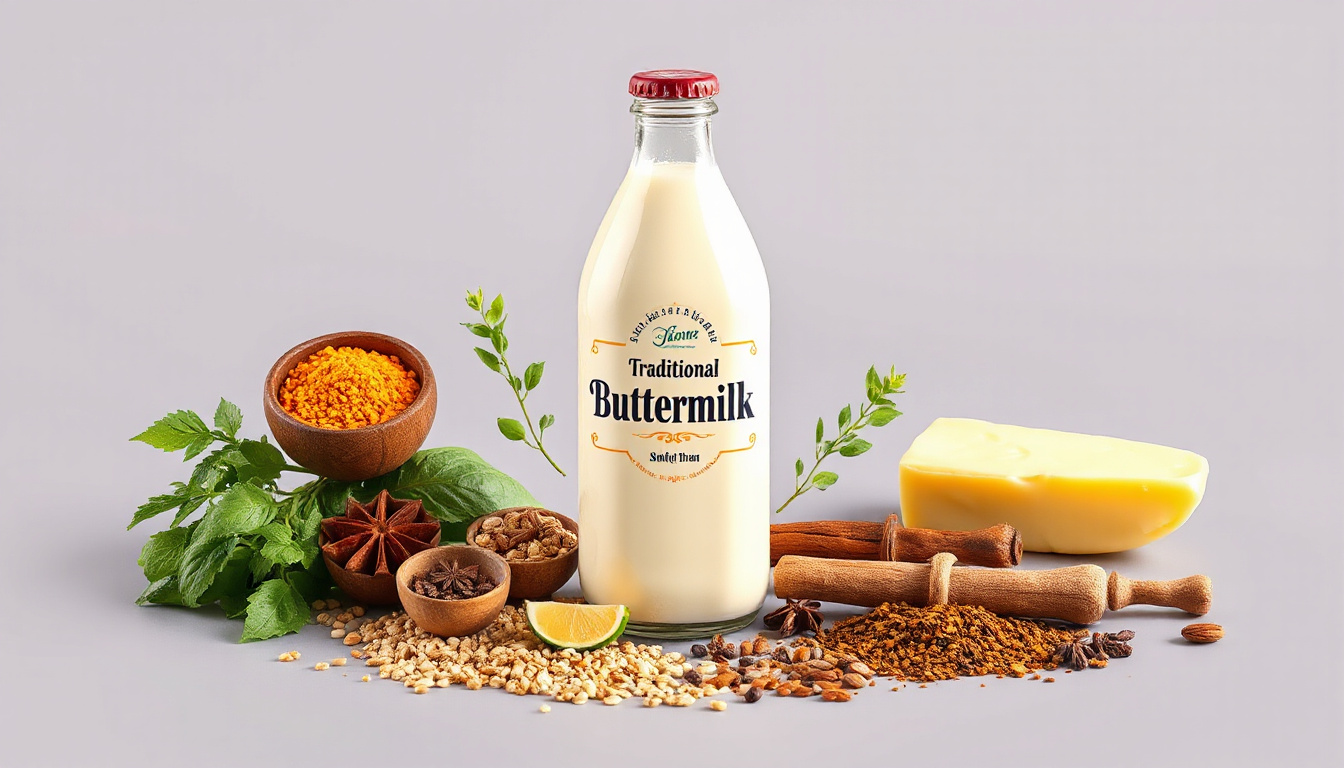Unraveling the Mystery: Why Buttermilk Isn’t Just Butter’s Byproduct

Buttermilk often brings to mind images of creamy, rich butter, but in reality, it’s a unique fermented product with a rich history and distinct qualities that set it apart from what many might initially expect. Particularly popular in the Southern United States, buttermilk serves as more than just a culinary ingredient; it’s also a reflection of the region's agricultural traditions and historical practices.
The Origins and Nature of Buttermilk
Traditionally, buttermilk in the U.S. is not the high-fat, luscious drink one may assume from its name. In fact, it is fermented milk that has turned sour and thickened, primarily made from the leftover liquid after butter has been churned. This process is a legacy of dairy farming techniques developed in the 18th and 19th centuries, particularly in rural areas of the Appalachian region, such as East Tennessee.
The invention of buttermilk is rooted in necessity. Before modern refrigeration, milk was a highly perishable product, and with the hot and humid Southern climate, it would spoil quickly. To extend the life of their milk, farmers discovered that intentionally allowing it to sour could preserve it longer. This intentional fermentation process not only slowed spoilage but also introduced beneficial bacteria, making buttermilk a nutritious alternative.
The Fermentation Process
Unlike sweet milk, which is fresh and unspoiled, buttermilk has undergone a transformation facilitated by lactic acid-producing bacteria. This fermentation gives it a characteristic tangy flavor and contributes to its health benefits, as these probiotics can enhance gut health and overall digestion. The importance of these beneficial microorganisms reflects a growing awareness of how fermented foods can positively affect human health.
Some traditional practices involve using a portion of previously soured milk to culture new batches. This technique enhances the flavor of the next batch while ensuring the preservation benefits continue. Over time, the understanding of these microorganisms has evolved, uncovering the significant advantages of fermented foods for both humans and livestock.
Beyond the Kitchen: Cultural Significance and Uses
Historically, buttermilk was not just an ingredient but also a staple drink among farmers. It provided energy and hydration in a time when the work was physically demanding. Despite its nutritious properties, it was often viewed less favorably in contemporary tastes, which may explain why some might hesitate to drink it. However, historical accounts suggest that some individuals have cherished its refreshing qualities, especially when made from fresh, quality ingredients.
In addition to being a traditional drink, buttermilk has found a significant place in various recipes, such as biscuits, pancakes, and marinades. Its acidity provides a unique flavor and tenderizes ingredients during cooking.
The Connection to Butter
The term "buttermilk" itself raises questions about its origins. The process of making butter involves churning cream to separate the butterfat from the liquid, resulting in a nutrient-dense byproduct—this is what traditional buttermilk is referred to today. In its European origins, traditional butter-making often included culturing the cream before churning, resulting in a naturally tangy byproduct.
Dairy farmers would use this leftover buttermilk both in their cooking and to feed livestock, while also passing on an understanding of its healthful properties down generations. Interestingly, buttermilk's reputation as "swine's milk" in some areas reveals its historical use as animal feed, further emphasizing its versatility.
Conclusion
In summary, buttermilk is far more than merely a byproduct of butter-making. Its history is steeped in necessity and innovation, showcasing how farmers adapted to their climates and resources. The fermentation process it undergoes provides not only a means of preservation but also leads to significant health benefits that have been appreciated for generations.
While it might require a bit of an acquired taste for some, buttermilk remains a beloved ingredient in Southern cooking, a cultural staple that reflects the agricultural heritage of the region. Understanding the true nature of buttermilk invites us to appreciate it not just as a culinary tool, but as a complex product with a story rooted deeply in American history.




